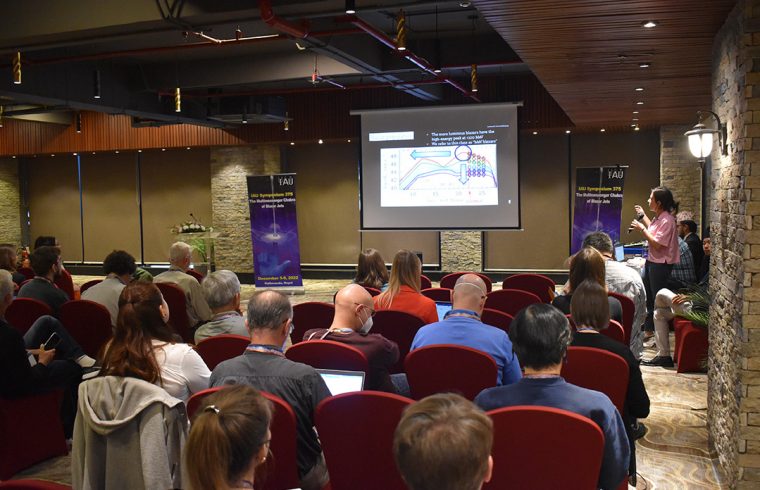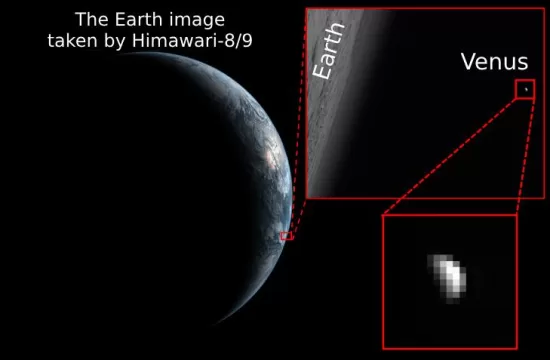Kathmandu— The IAU Symposium 375, “The Multimessenger Chakra of Blazar Jets,” began on Monday in Kathmandu. This is the first time the International Astronomical Union (IAU) has scheduled a five-day international symposium in Kathmandu on December 5–9, 2022.
The IAUS375 symposium included 30 invited speakers and over 100 participants from different countries, including Nepal, India, China, the United States, Russia, Germany, and the United Kingdom. The majority of people came from Europe and India, Chile, Japan, and South Korea, according to the organizer.” During this symposium, more than 80 working papers on blazar jets will be presented.”
According to the IAUS375, the symposium has a special focus on blazar jets; blazars are among the most intriguing and consistently bright objects in the observable universe. They are the most extreme active galactic nuclei, with powerful relativistic jets extending out to kiloparsecs (kpc) from the central engine.
“We are hopefully bridging different participants after the end of the symposium and summarizing current knowledge —applying it to their scientific journey,” said Ioannis Liodakis, Convener of IAUS375. “This symposium also helps to promote astronomy in developing countries through a collaboration with researchers from different countries.”
“2021 marked the beginning of the era of high-energy polarization with the launch of the Imaging X-ray Polarimetry Explorer,” said Liodakis. “The symposium comes at the right time to recollect all that we know about blazars and all that we have yet to learn, and to organize the community and facilitate the building of new collaborations that will allow us, in this multimessenger era, to take advantage of the wealth of existing and upcoming facilities and tackle the major open questions in astrophysical jets.”
Anthony Readhead, an invited keynote speaker, gave a virtual talk on “overview of blazar science” and an overview of chakra in astronomy. He said that chakra is mentioned in Hindu philosophy, and it is quite similar to the chakra of blazar jets. In modern astronomy, blazars are thought to be active galactic nuclei with relativistic jets oriented close to the line of sight with the observer.
In astronomy, the special jet orientation explains the general peculiar characteristics: high observed luminosity, very rapid variation, high polarization, and the apparent superluminal motions detected along the first few parsecs of the jets in most blazars.
Likewise, another speaker, Eileen Meyer, taught about “Extragalactic Jets from Radio to Gamma-Rays.” Despite decades of systematic study of their emission across the electromagnetic spectrum, scientists still lack a basic understanding of their intrinsic jet processes and the processes relevant to the supermassive black holes that power them.
This symposium intends to help participants understand how black holes interact with their environments, as well as the consequences of such interactions, which have rippling effects not only across astrophysics but also for fundamental physics and beyond.
According to the organizer, this is in fact the perfect time to study blazars and their jets. Advances in radio, optical, continued operations of Swift in X-rays and Fermi in γ-rays, IceCube in neutrinos, as well as the upcoming large-scale surveys, set the ideal stage to study the multimessenger emission and structure of blazars on diverse scales.
Vasiliki Pavlidou, University of Crete, Greece, and Roger Blandford, Stanford University, USA, are both jointly co-chairs of the scientific organizing committee.
This international symposium, “IAUS375,” is managed by the Nepal Astronomical Society (NASO), locally.
Manisha Dwa, Member of the Local organizing committee, shared this is a time to cherish all the efforts we have put in to make a successful symposium in Nepal.
According to Dwa, they are also organizing outreach programs as a part of the symposium: RAD@home, an astronomy workshop for high school students, and a science teacher’s workshop on how to teach blazars and black holes in the classroom. There will be schools visited inside the valley by scientists to interact with students from community schools, aged 12–14.








